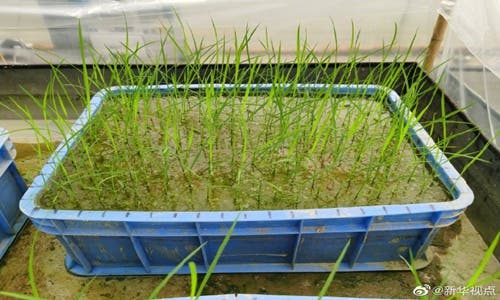With two swift strokes, China showed it’s taking its space agriculture projects very seriously. After harvesting its first batch of “space rice” that went to the moon, China is also distributing lunar soil samples to research institutes to assess lunar habitability.

Rice from the heavens
China is doing much more than dipping its toes into space exploration. After setting up its own space station, sending a rover on Mars, and reporting breakthroughs in quantum space communication, China now has its eyes on a different prize: space agriculture.
Food security has long been a concern for China, and as the country strives to feed its 1.4 billion inhabitants while also raising the standard of life, the challenge won’t be easy. Apparently, in the long run, China also sees space exploration as an avenue worth exploring. Recently, the country harvested the first “moon rice” from seeds that returned from the moon last year. Researchers hope that the experience can help them create new, more resilient plant varieties.
China’s fascination with space breeding crops has been a surprisingly prolific endeavor. Since 1987, the country has been carrying seeds of rice, cotton, and other crops into outer space. The reasoning is that after being exposed to cosmic radiation, seeds can undergo useful mutations that make them produce higher yields and make them more resistant to pests.
“It was a breakthrough of mutation rice breeding experiments in deep space,” said Chen Zhiqiang, director of the lab center in an interview with Xinhua News Agency.
“The seeds have experienced special environments including microgravity and sunspot eruption in the process of space travel, which affects the genetic variation of rice seeds.”
Overall, 1,500 rice seeds weighing 40 grams traveled with the spacecraft. They were then grown in a greenhouse and planted in the field in the South China Agricultural University campus.
Of course, it takes a lot of research to ensure that this is indeed the case, but over 200 of these space crops have been approved for planting in China. It normally takes a few years before these varieties enter the market.

With the Chang’e-5 lunar probe, rice seeds have traveled deeper into space than ever before, and the impact of cosmic rays and microgravity is stronger. As a result, Chinese researchers expect to see more genetic effects on the seeds — though whether or not these effects are actually useful remains to be seen.
Moon crops
China also wants to establish a research station and base on the moon, and may even look at using a lunar greenhouse for growing crops. Having access to non-terrestrial crops will also be helpful for future manned spaceflights (especially longer missions).
To this end, China distributed batches of 17 grams of lunar soils to 13 research institutes, including the Chinese Academy of Sciences, China University of Geosciences, and Sun Yat-Sen University. The goal is to use the samples to understand more about the moon’s geology and evolution, but also to peer into its potential habitability. In its lunar mission, China was already able to grow crops on the lunar surface, after cotton seeds successfully sprouted inside a special mini-biosphere container.
For China, this is also an opportunity to boost its standing as a space power — not just among other countries, but among its inhabitants as well. Lunar soil was also exhibited in Hong Kong, which the state-owned Global Times noted as a boost to “patriotic sentiment.” Chan Wai-keung, a lecturer at the Hong Kong Polytechnic University, reportedly told the Global Times that it would be beneficial for people in Hong Kong to “arouse their patriotic sentiment through China’s achievements in aerospace”.
Slowly but surely, a new space race seems to be heating up.






